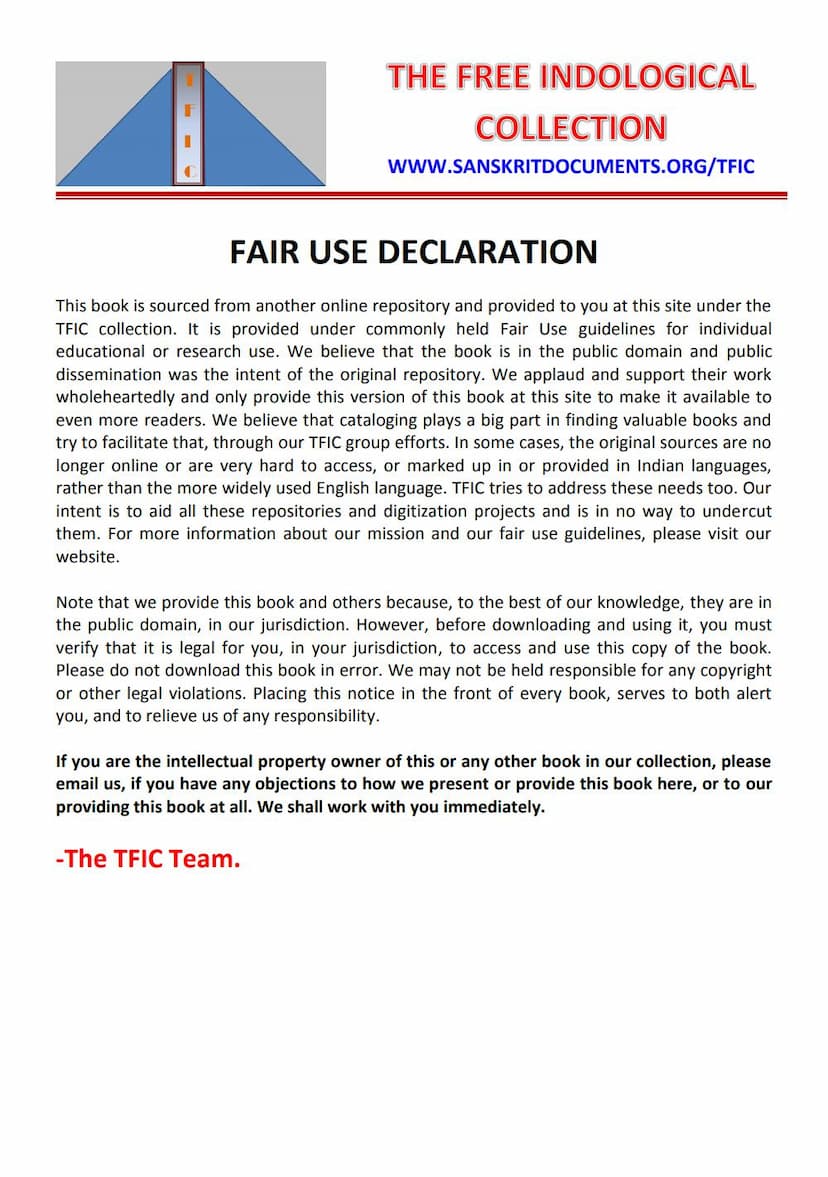Gandharwad
Added to library: September 1, 2025

Summary
This Jain text, "Ganadharavāda," is an analysis of various philosophical discussions between Lord Mahavira and his eleven chief disciples, the Ganadharas. The book, edited by Muni Ratna-prabha Vijaya and translated and introduced by Prof. Dhirubhai P. Thaker, delves into fundamental Jain doctrines through dialogues.
The core of the text lies in the discussions with each of the eleven Ganadharas, addressing specific philosophical doubts and questions. These discussions explore key Jain concepts such as:
- Jiva (Soul): Its existence, properties, incorporeality, and distinction from the body. The text engages with the Vedantist argument that souls, being everywhere the same, cannot be classified, and refutes the Buddhist theory of the soul's destructibility.
- Karma: The existence and significance of karma are established as the cause of pleasure and pain, and the formation of the karmic body. The subtle nature of karma and its intricate relationship with the soul, described as beginningless, are explained.
- Relationship between Soul and Body: The text clarifies that consciousness is an intrinsic quality of the soul, not of the physical elements constituting the body. Analogies are used to demonstrate the soul's distinctness from the body and senses.
- Existence of Elements: The validity of elements (earth, water, fire, air, and sky) is discussed, emphasizing that the first four are animate while sky is incorporeal. The doctrine of Ahimsa (non-violence) is linked to ethical consequences.
- Identity of Existence: The text refutes the idea that life in one existence is identical to another, arguing that rebirth depends on karmas, leading to varied existences.
- Bandha and Moksa: The beginningless and endless relationship between soul and karma is explored, explaining that moksa is the shedding of karmic matter from the soul, leading to a pure, eternal state of perfect knowledge and bliss.
- Existence of Devas and Nārakas: The existence of celestial beings and hellish denizens is supported through various arguments, including their perceptible manifestation during Tirthankara births and their differing states of happiness and misery compared to humans.
- Pāpa and Punya: Different theories regarding their existence are presented and refuted, establishing punya and papa as independent entities that act as causes for happiness and misery respectively.
- Para-bhava (Other World): The Soul's susceptibility to production, destruction, and retention is argued to grant it access to the next world.
- Nirvana (Final Emancipation): The Buddhist theory of nirvana is discussed and refuted. Bhagavān Mahavira asserts that moksa is the complete separation of karma from the soul, leading to a pure, eternal state of perfect knowledge and bliss.
The introduction by Prof. Thaker provides historical context on Jainism, its origins, the lineage of Tirthankaras, and the importance of the Angas and Purvas in the Jain canon. It also details the life and works of Jinabhada Gani Kşamās'ramana, the author of the Viseṣāvasyaka Bhasya, within which the Ganadharavada is contained. The text is noted for its logical approach to interpreting Jain principles, aiming to appeal to the intellect.
The book itself presents the "Ganadharavāda" section, which comprises discussions with each of the eleven Ganadharas. Each chapter focuses on a specific Ganadhara and the philosophical topics they discussed with Bhagavān Mahavira. The text includes the original Prakrit verses, their English translation, and a digest of the commentary by Maladhāri Hemacandrācārya.
Overall, "Gandharvada" is a scholarly work that provides detailed insights into the core philosophical and ethical tenets of Jainism, presented through the profound dialogues between Lord Mahavira and his closest disciples.